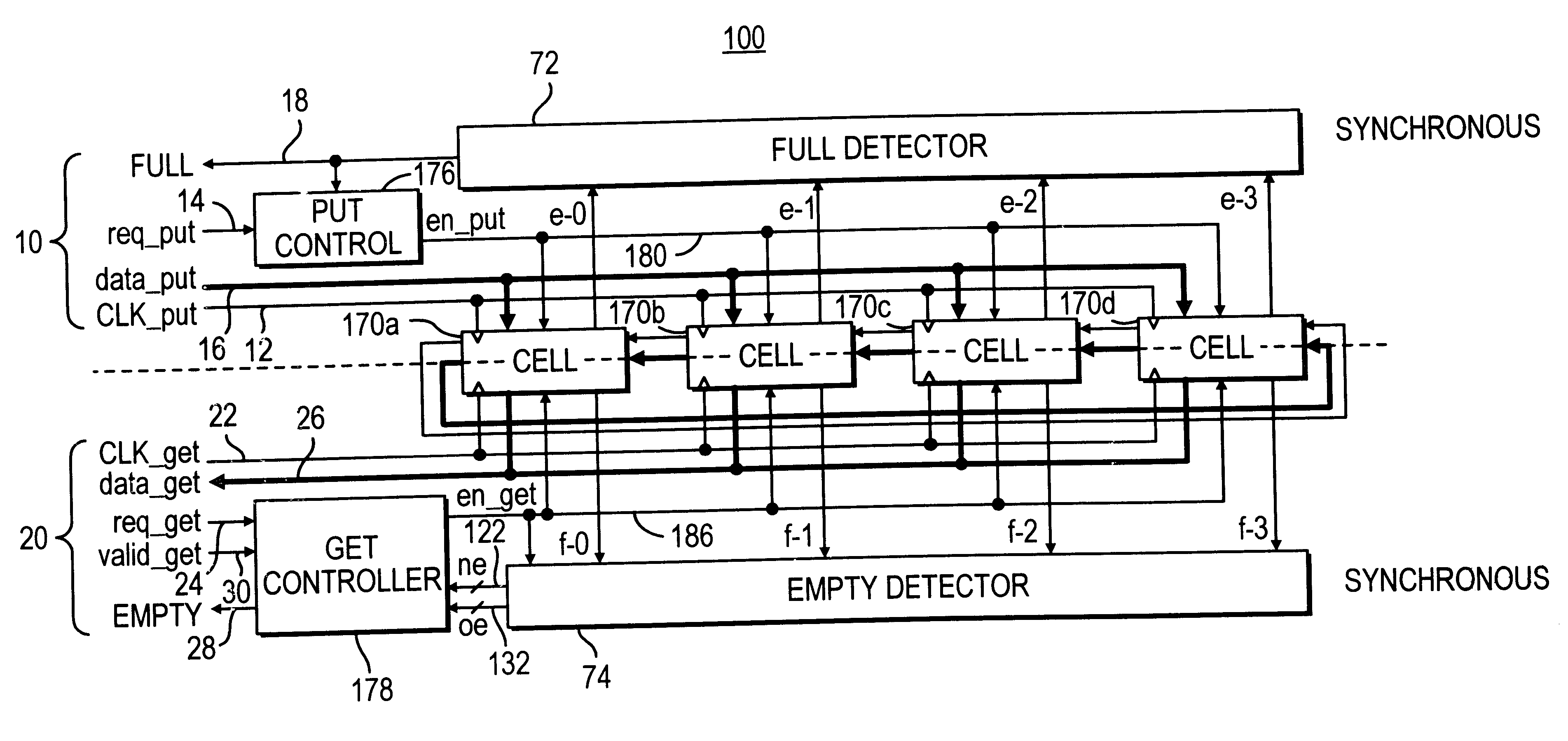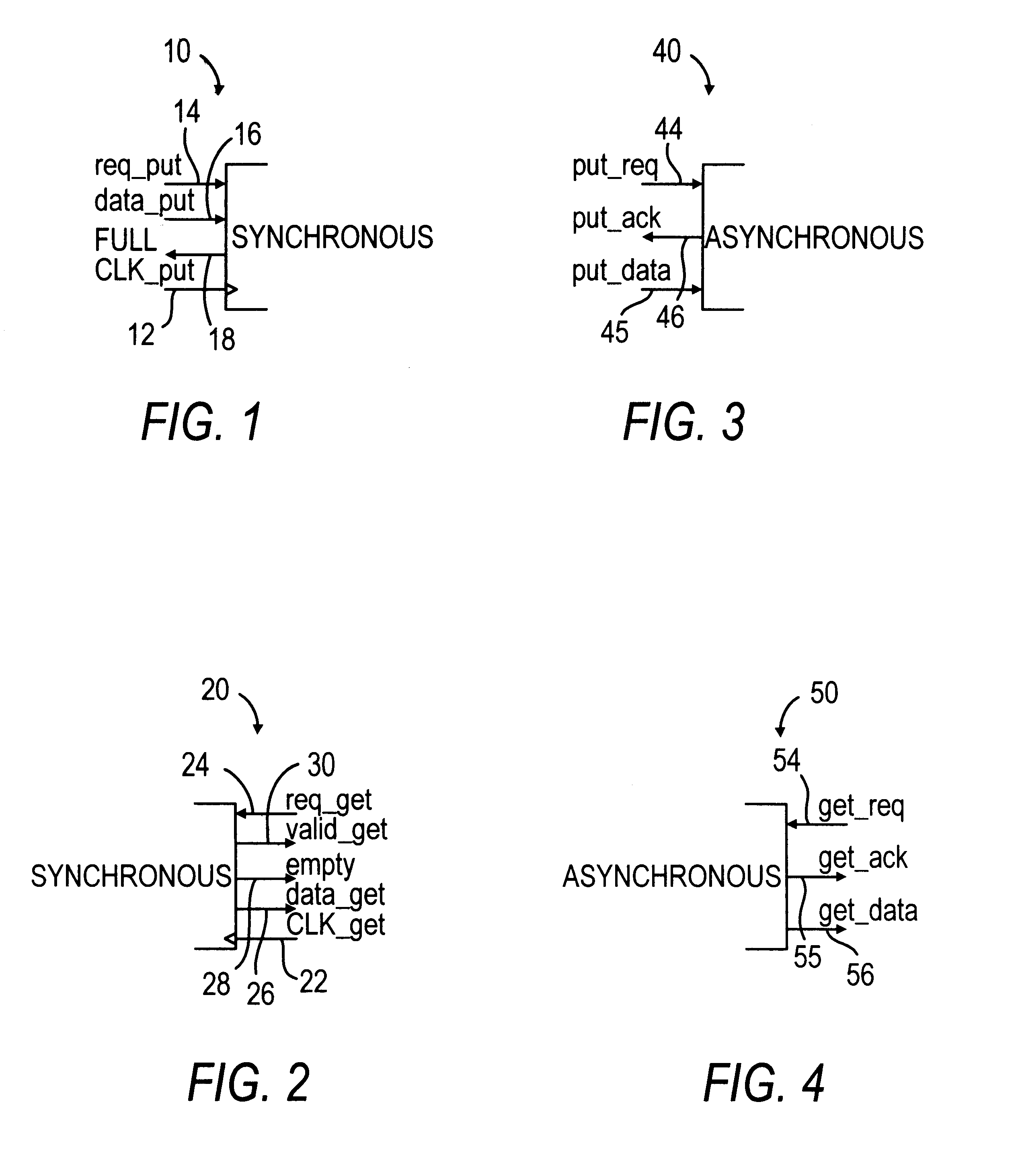Low latency FIFO circuits for mixed asynchronous and synchronous systems
a technology of mixed asynchronous and synchronous systems, applied in the field of low latency fifo circuits, can solve the problems of design having long delays in communication between systems, few adequate solutions, and complex interfaces between these domains, and achieve the effect of low latency and high throughpu
- Summary
- Abstract
- Description
- Claims
- Application Information
AI Technical Summary
Benefits of technology
Problems solved by technology
Method used
Image
Examples
example
In order to evaluate the performance of the various FIFO circuit designs, Each of the exemplary FIFO circuit 100, 200, 300, 500, 600, and 700 were simulated. Each FIFO circuit was simulated using both commercial and academic tools. The designs were built using both library and custom circuits, and were simulated using Cadence HSPICE. The Burst-Mode controllers were synthesized using Minimalist (Minimalist is described in greater detail in R. Fuhrer et al., “MINIMALIST: An Environment for Synthesis, Verification and Testability of Burst-Mode Asynchronous Machines,”CUCS-020-99, 1999, which is incorporated by reference in its entirety herein.) and the Petri-Net controllers were synthesized using Petrify (Petrify is described in greater detail in J. Cortadella et al., “Petrify: A Tool for Manipulating Concurrent Specifications and Synthesis of Asynchronous Controllers,”IEICE Transactions on Information and Systems, Vol. E80-D, Number 3, pp. 315-325, March 1997, which is incorporated by ...
PUM
 Login to View More
Login to View More Abstract
Description
Claims
Application Information
 Login to View More
Login to View More - R&D
- Intellectual Property
- Life Sciences
- Materials
- Tech Scout
- Unparalleled Data Quality
- Higher Quality Content
- 60% Fewer Hallucinations
Browse by: Latest US Patents, China's latest patents, Technical Efficacy Thesaurus, Application Domain, Technology Topic, Popular Technical Reports.
© 2025 PatSnap. All rights reserved.Legal|Privacy policy|Modern Slavery Act Transparency Statement|Sitemap|About US| Contact US: help@patsnap.com



